You searched for: 布隆迪博彩引流【TG飞机:@bapingseo】红绿灯交易平台源码模板【TG电报:@bapingseo】网络营销推广公司【Telegram:@bapingseo】AG电玩在线pc加拿大28信誉平台?20220707Z2aPJC.html
<< Previous | Displaying results 151-200 of 553 for "布隆迪博彩引流【TG飞机:@bapingseo】红绿灯交易平台源码模板【TG电报:@bapingseo】网络营销推广公司【Telegram:@bapingseo】AG电玩在线pc加拿大28信誉平台?20220707Z2aPJC.html" | Next >>
-
1941: Key Dates
ArticleExplore a timeline of key events during 1941 in the history of Nazi Germany, World War II, and the Holocaust.
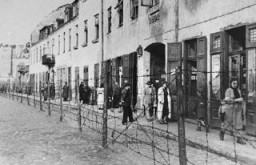
-
Lidice: The Annihilation of a Czech Town
ArticleGerman forces razed the town of Lidice in June 1942 in retaliation for the death of Nazi leader Reinhard Heydrich. Learn about the assassination and reprisal.

-
Chuna Grynbaum: Maps
Media EssayChuna Grynbaum was born to Jewish parents in Starachowice, Poland in 1928. When he was 13 years old, Chuna was sent to forced labor at a munitions factory. In 1943, he attempted to escape with his sister, Faiga. Faiga...
-
Aron and Lisa Derman: Oral History Excerpts
Media EssayIn 1942, Aron Derman and Lisa Nussbaum escaped deportation from the Grodno ghetto with the help of Tadek Soroka, a non-Jewish Pole. Aron and Lisa—aged 19 and 15—joined the armed Jewish resistance. As partisans, they f...
-
Einsatzgruppen massacres in eastern Europe (enlargement)
MapEinsatzgruppen were German special duty units, composed primarily of SS and police personnel, assigned to kill Jews as part of the Nazi program to kill the Jews of Europe. During the invasion of the Soviet Union in June 1941, the mobile killing squads followed the German army as it advanced deep into Soviet territory, and carried out mass-murder operations. Wherever the Einsatzgruppen went they shot Jewish men, women, and children, without regard for age or gender. Einsatzgruppen killed more than a…

-
Jewish parachutist Hannah Szenes with her brother
PhotoJewish parachutist Hannah Szenes with her brother, before leaving for a rescue mission. Palestine, March 1944. Between 1943 and 1945, a group of Jewish men and women from Palestine who had volunteered to join the British army parachuted into German-occupied Europe. Their mission was to organize resistance to the Germans and aid in the rescue of Allied personnel. Hannah Szenes was among these volunteers. Szenes was captured in German-occupied Hungary and executed in Budapest on November 7,…
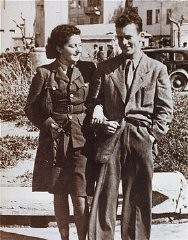
-
Norman Salsitz's wife and daughter
PhotoNorman's daughter, Esther, at three weeks of age, with her mother, Amalie. September 1956. With the end of World War II and collapse of the Nazi regime, survivors of the Holocaust faced the daunting task of rebuilding their lives. With little in the way of financial resources and few, if any, surviving family members, most eventually emigrated from Europe to start their lives again. Between 1945 and 1952, more than 80,000 Holocaust survivors immigrated to the United States. Norman was one of them.
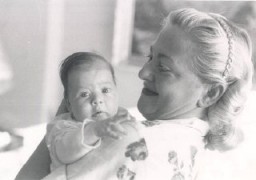
-
Theresienstadt: Other Prisoners
ArticleLearn more about the fate of Jewish prisoners that were deported to Theresienstadt from places other than the Greater German Reich or the Protectorate.

-
Salonika
ArticleSalonika, Greece was invaded and occupied by the Nazis in 1941. Learn more about the fate of the Jews in Salonika during World War II.
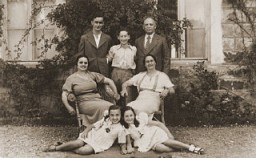
-
Karl Marx
ArticleKarl Marx was a political theorist and philosopher. He published “The Communist Manifesto” with Friedrich Engels. His works were burned in Nazi Germany in 1933.
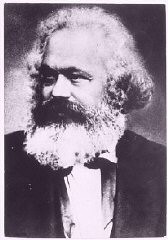
-
Meir Porges
ArticleRead the Jewish Partisan Educational Foundation's short biography of Meir Porges.
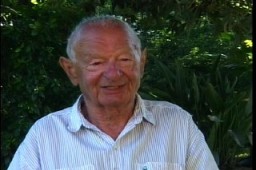
-
Alexander White
ArticleRead the Jewish Partisan Educational Foundation's short biography of Alexander White.

-
Emil Ludwig
ArticleEmil Ludwig was a liberal journalist and popular biographer whose works were burned under the Nazi regime in 1933. Learn more.
-
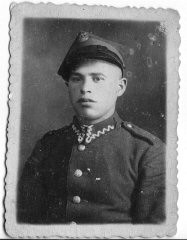
-
Sara Fortis
ArticleRead the Jewish Partisan Educational Foundation's short biography of Sara Fortis.
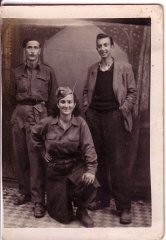
-
Euthanasia Program and Aktion T4
ArticleThe Nazi Euthanasia Program, codenamed Aktion "T4," was the systematic murder of institutionalized people with disabilities. Read about Nazi “euthanasia.”

-
Law, Justice, and the Holocaust
ArticleLearn about the role of the legal profession as the Nazi leadership gradually moved Germany from a democracy to a dictatorship.

-
Glossary of Terms and Individuals in the Nazi Judicial System
ArticleLearn more about the Holocaust Encyclopedia’s key terms and individuals in the Nazi judicial system.
-
World War II in Europe
ArticleWorld War II lasted from 1939 to 1945, when the Allies defeated the Axis powers. Learn about key invasions and events during WWII, also known as the Second World War.
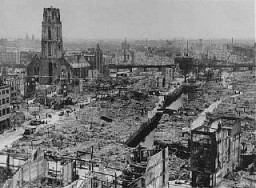
-
Invasion of Poland, Fall 1939
ArticleThe German invasion of Poland in the fall of 1939 triggered WWII. Learn more about key dates and events, causes, and related Holocaust history.
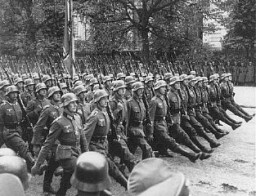
-
Norman Salsitz's parents
PhotoPrewar portrait of Norman's parents, Isak and Ester, taken in Kolbuszowa, Poland, in 1934 when Isak's brother visited from America. Isak's six siblings all emigrated to America. Isak and Esther, who remained in Kolbuszowa, both perished during the Holocaust: Isak was killed in the Kolbuszowa ghetto on April 28, 1942, and Esther was killed in the Belzec killing center in July 1942. With the end of World War II and collapse of the Nazi regime, survivors of the Holocaust faced the daunting task of…
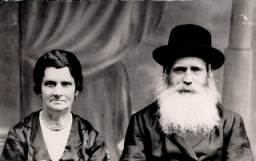
-
Heinrich Himmler: Key Dates
ArticleHeinrich Himmler was the leader of the dreaded SS of the Nazi Party from 1929 until 1945. Learn more about key dates in the life of Heinrich Himmler.

-
Theresienstadt: SS and Police Structure
ArticleLearn more about the unique SS and police structure of the Theresienstadt “camp-ghetto” during World War II.
-
The Reichstag Fire
ArticleThe Nazis and their coalition partners used the burning of the Reichstag on February 27, 1933, as the pretext for emergency legislation that ultimately paved the way for Nazi dictatorship.
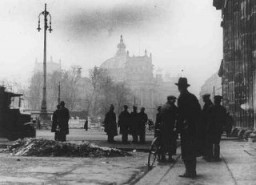
-
Foundations of the Nazi State
ArticleFollowing Hitler's appointment as chancellor, the Nazis began laying the foundations of a state based on racist and authoritarian principles and the elimination of individual freedoms.
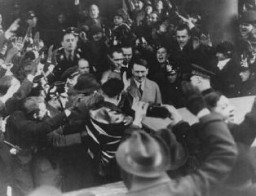
-
Gross-Rosen
ArticleLearn about the Gross-Rosen camp, including its establishment, prisoner population, subcamps, forced labor, and liberation.

-
1940: Key Dates
ArticleExplore a timeline of key events during 1940 in the history of Nazi Germany, World War II, and the Holocaust.

-
2nd Canadian Division
ArticleThe Canadian 2nd Division reached the Westerbork camp on April 12, 1945. Learn about its role in WWII military campaigns and in the liberation of the camp.
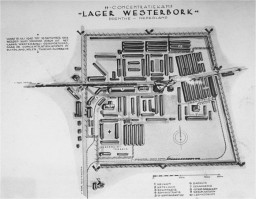
-
Faye Schulman
ArticleRead the Jewish Partisan Educational Foundation's short biography of Faye Schulman.

-
Jewish Losses during the Holocaust: By Country
ArticleBefore the Nazi rise to power, the countries of Europe had varied and vibrant Jewish communities. By 1945, two out of every three European Jews had been killed.

-
Charles Bedzow
ArticleRead the Jewish Partisan Educational Foundation's short biography of Charles Bedzow.
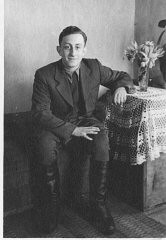
-
The 101st Airborne Division during World War II
ArticleThe 101st Airborne participated in major WWII campaigns and is recognized for liberating the Kaufering subcamp of Dachau in 1945.
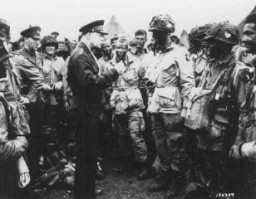
-
The 69th Infantry Division during World War II
ArticleThe 69th Infantry Division participated in major WWII campaigns and is recognized for liberating the Leipzig-Thekla subcamp of Buchenwald in 1945.
-
Johanna Gerechter Neumann describes her family's arrival in Bologna and aid received from Italian students before emigrating to Albania
Oral HistoryAmid intensifying anti-Jewish measures and the 1938 Kristallnacht ("Night of Broken Glass") pogrom, Johanna's family decided to leave Germany. They obtained visas for Albania, crossed into Italy, and sailed in 1939. They remained in Albania under the Italian occupation and, after Italy surrendered in 1943, under German occupation. The family was liberated after a battle between the Germans and Albanian partisans in December 1944.
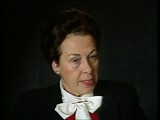
-
Halle
ArticleHalle an der Saale was a satellite camp of Buchenwald concentration camp. It was established by the Nazis in Saxony, Germany in 1941.
-
Jakob Frenkiel
ID CardJakob was one of seven boys in a religious Jewish family. They lived in a town 50 miles west of Warsaw called Gabin, where Jakob's father worked as a cap maker. Gabin had one of Poland's oldest synagogues, built of wood in 1710. Like most of Gabin's Jews, Jakob's family lived close to the synagogue. The family of nine occupied a one-room apartment on the top floor of a three-story building. 1933-39: On September 1, 1939, just a few months before Jakob turned 10, the Germans started a war with Poland.…

-
Gertrud Gruenbaum
ID CardBorn to a Jewish father and a Catholic mother, Gertrud grew up in Vienna. Trude, as she was affectionately called, attended a public secondary school, where half of her classmates were Jewish. At age 7 she rejected music lessons for classes in dancing and acting. Trude wanted to be like Greta Garbo. She launched an acting career at age 18, assuming the stage name Trude Hermann. 1933-39: Because Gertrud was Jewish she couldn't get acting jobs in Austria and nearby Sudetenland. In 1937 her agent found work…

-
Marcus Fass
ID CardMarcus, known to his family as Moniek, was one of three children born to a Jewish family in the Polish town of Ulanow. His father worked as a tailor. Ulanow's Jewish community had many of its own organizations and maintained a large library. From the age of 3, Moniek attended a religious school. He started public school when he was 7. 1933-39: In 1935 Moniek's father left for America to find a job so that his family could later join him. He sent money to them while they waited for their emigration papers.…

-
Machla Spicehandler Braun
ID CardRaised in Lowicz, Poland, in a religious Jewish family, Machla moved to Lodz when she married Jacob Braun. Her husband worked as a businessman and real estate investor. He became the landlord for an apartment building where he and his family also lived. Machla, a housewife, cared for their five children, who ranged in age from 5 to 15. 1933-39: Machla worked as a volunteer for the Zionist cause. The Brauns were a close family, and Machla's daughters Lena and Eva held their weddings in the Braun's large…
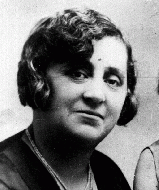
-
Magdalena Kusserow
ID CardOne of 11 children, Magdalena was raised as a Jehovah's Witness. When she was 7, her family moved to the small town of Bad Lippspringe. Her father was a retired postal official and her mother was a teacher. Their home was known as "The Golden Age" because it was the headquarters of the local Jehovah's Witness congregation. By age 8 Magdalena could recite many Bible verses by heart. 1933-39: The Kusserow's loyalty was to Jehovah, so the Nazis marked them as enemies. At 12 Magdalena joined her parents and…

-
Otto-Karl Gruenbaum
ID CardBorn to a Jewish father and a Catholic mother, Otto grew up in a city well known for its musical tradition. The younger of two children, Otto began studying the piano at age 10. After entering the Vienna Conservatory of Music, he gave his first concert at age 14. Encouraged by Maestro Bruno Walter, he hoped to become a conductor and concert pianist. 1933-39: After Germany annexed Austria in March 1938, Otto was kicked out of the Vienna Conservatory. One night, two men ordered him to go with them to a…
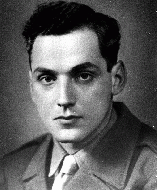
-
Frederick Fleszar
ID CardFrederick was the oldest of two sons born to Polish immigrants in Syracuse, New York. In 1922 Frederick's father, who was a musician, moved the family back to Poland where they settled in Poznan. There Frederick started public school and was accepted to the boys section of the prestigious Poznan Cathedral Choir. 1933-39: In 1933, at age 17, Frederick graduated from secondary school and enrolled in medical school at the university at Poznan. He sang with the choir for the last time the day he graduated…

-
Settchen Oppenheimer
ID CardSettchen was one of three children born to a religious Jewish family in a small town in the German state of Hessen. Her father was a cantor and kosher butcher. Settchen completed grade school during the 1880s. Because of a digestive disease, Settchen was largely homebound. She never married, and lived with her younger sister and brother-in-law. 1933-39: Reichenbach was a quiet town. Its largely Protestant inhabitants were generally not antisemitic. After Hitler came to power in 1933, the Nazis staged…

-
Adela Low
ID CardAdela, known as Udl to her family, was one of four children born to a Jewish family in the Polish town of Ulanow. Her father was a landowner and cattle merchant, transporting calves from the Ulanow area for sale in other towns in the region. From the age of 3, Adela attended a private religious school for girls where she learned Jewish history and Hebrew. At age 7 she began public school. 1933-39: Adela came from a charitable family; when her mother baked challah, a special bread for the Jewish Sabbath,…
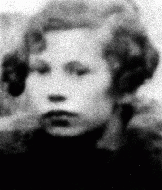
-
Herschel Low
ID CardHerschel was the oldest of four children born to a Jewish family in the Polish town of Ulanow. His father was a landowner and cattle merchant who transported calves from the Ulanow area for sale in other towns. Herschel attended a religious school from the age of 3, and started public school at age 7. 1933-39: Since Herschel was skilled with his hands, his father got him a job weaving reed baskets after he graduated from high school. Herschel was also a member of a Jewish youth organization, Benei Akiva,…
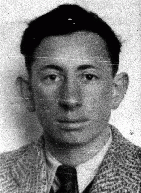
-
Fritzie Weiss Fritzshall describes receiving help from a prisoner in the "Kanada" detail upon arrival at Auschwitz
Oral HistoryFritzie's father immigrated to the United States, but by the time he could bring his family over, war had begun and Fritzie's mother feared attacks on transatlantic shipping. Fritzie, her mother, and two brothers were eventually sent to Auschwitz. Her mother and brothers died. Fritzie survived by pretending to be older than her age and thus a stronger worker. On a death march from Auschwitz, Fritzie ran into a forest, where she was later liberated.

-
Fritzie Weiss Fritzshall describes the selection process in Auschwitz
Oral HistoryFritzie's father immigrated to the United States, but by the time he could bring his family over, war had begun and Fritzie's mother feared attacks on transatlantic shipping. Fritzie, her mother, and two brothers were eventually sent to Auschwitz. Her mother and brothers died. Fritzie survived by pretending to be older than her age and thus a stronger worker. On a death march from Auschwitz, Fritzie ran into a forest, where she was later liberated.
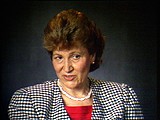
-
Morris Kornberg describes forced labor beginning after the German invasion of Poland
Oral HistoryMorris grew up in a very religious Jewish household and was active in a Zionist sports league. When the Germans invaded Poland in September 1939, Morris's town was severely damaged. Morris's family was forced to live in a ghetto, and Morris was assigned to forced labor. After a period of imprisonment in Konskie, a town about 30 miles from Przedborz, Morris was deported to the Auschwitz camp. He was assigned to the Jawischowitz subcamp of Auschwitz. In January 1945, Morris was forced on a death march and…

-
German Jews during the Holocaust
ArticleBy September 1939, over half of German Jews had emigrated. WWII would accelerate the persecution, deportation, and later, mass murder, of the remainder of Germany's Jews.

